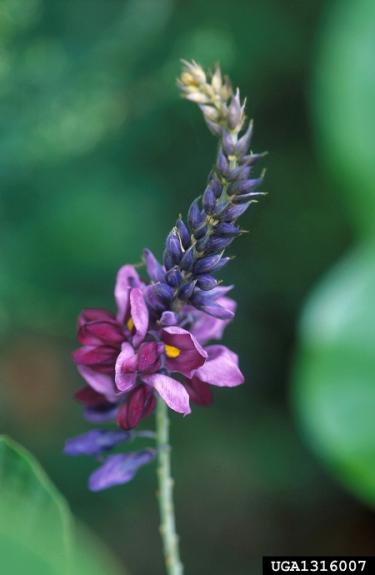When You Have a Kudzu Outbreak
Kudzu grows quickly and aggressively, so it’s important to act quickly and aggressively if you have an infestation. There are several approaches you can take, depending on the size of your infestation.
Grazing. Kudzu is palatable to livestock, so you can turn to grazing to control a kudzu infestation. Close grazing or overgrazing for 3 to 4 years can eliminate kudzu if the livestock continuously remove at least 80 percent of the growth (this is especially effective during the hottest temperatures of summer). According to the University of Florida Center for Aquatic and Invasive Plants, a helpful rule of thumb is to stock 8 goats per acre for kudzu control.
Mechanical control (pulling and cutting). For successful long-term kudzu control, you must destroy the massive root system and cut vines above ground level. You have to cut the root crown (where vines have rooted at the nodes) below the ground level. If you get all the root crowns, the below ground storage roots no longer have a way to sprout. Remove and destroy all cut material as well. Then follow up with close mowing every month for two growing seasons, at least. For optimal control, combine mechanical methods—cutting, disking and digging up the vines by hand—with herbicides for an integrated attack.
Burning. Prescribed fire can top-kill kudzu, but it doesn’t always destroy the roots and it can increase the risk of crown fires in desirable trees if they are overgrown with dead vines. However, fire will help you prepare your infested area for later mechanical or herbicide treatment by reducing biomass and revealing root systems and any hazards present on the site.
Herbicides. The legume-specific herbicide clopyralid and more general systemic herbicides will work on kudzu with repeated follow-up treatments. Herbicides can be sprayed on the foliage, or applied to stumps once the vine stems have been cut at ground level. Glyphosate (20% active ingredient) or triclopyr (12.5% active ingredient) mixed with a bark-penetrating oil are well-suited for stump application. Late summer and the dormant season (winter, if temperatures are cold) are the best times for treatment—but keep an eye out, as the roots may resprout even more than a year later.
Biological control. Biological controls for kudzu are still being studied. But the fungus that causes Asian soybean rust, a serious foliage disease first reported in the U.S. in 2004, does appear to infect kudzu. What about Kudzu bugs? They can make your kudzu less healthy and less competitive but they aren't likely to eradicate your Kudzu alone.
Controlling a well-established kudzu infestation is very challenging, and can take years of repeated treatment. Your best bet is an integrated attack that combines several of these approaches—and enough patience and dedication to keep applying them. Patience and dedication will also go a long way to preventing a kudzu infestation from ever starting on your land.
How can I get more tips?
It’s simple! Enter your email below.

